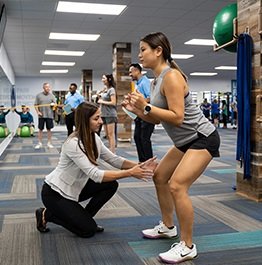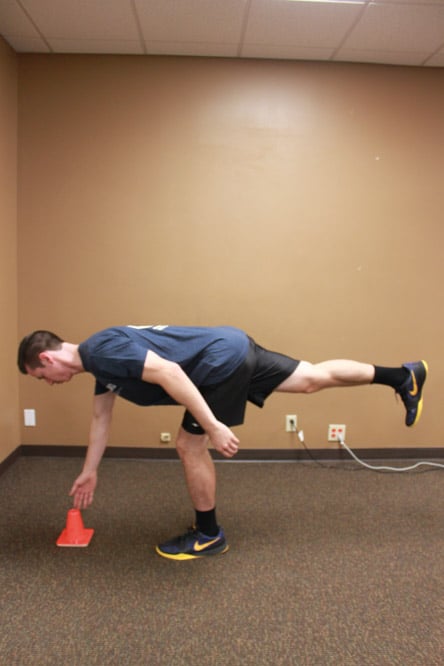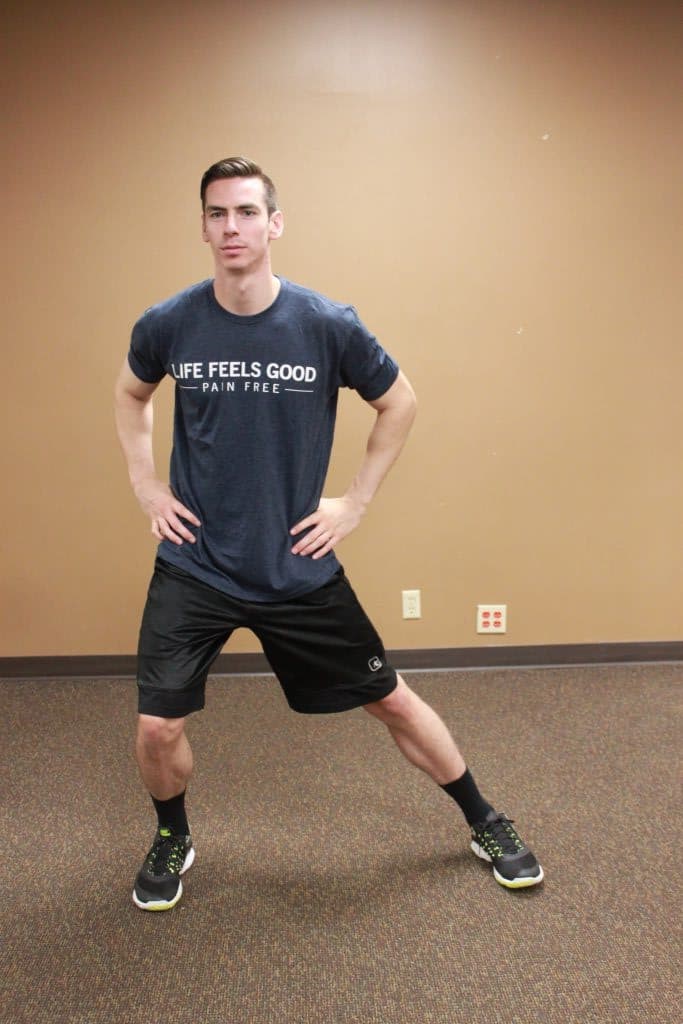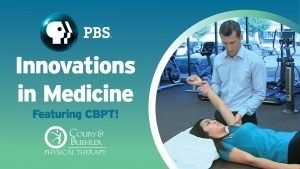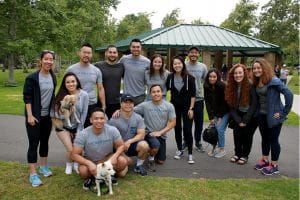
Not All Warm-Ups Are Created Equal
September 07, 2017Practice does not make perfect. Perfect practice makes perfect.
I still remember hearing this phrase for the first time back in high school, and its meaning is still clear as day. It’s not enough to simply train harder; you have to treat each training day no differently than you would on the field of play.
The warm up is one of the most discussed aspects of training and sports performance. Yet, when it comes to the correct progressions necessary to make a warm-up truly “perfect” for you, there are aspects that many athletes miss. I always remember back to my years as an athlete, when I always had no problem following the warm-ups laid out for me by the coaches. But when it came down to performing a true warm up for myself, I never quite knew which movements were best.
It was during my time as an intern with EXOS that I learned about the step-by step-process towards the perfect warm-up as tailored by Mark Vestergen. For general exercise such as running, hiking, and even the occasional fun backyard games, general warm-ups with dynamic stretching may be the way the go. But when it comes to the high-level performance and training, it is vital that you prepare your body for the stresses your body is about to endure.
Would you expect these three athletes to have the same warm-up regimen?


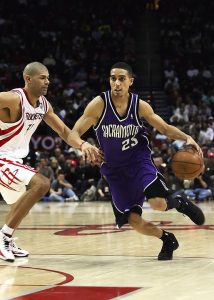
Do you think they perform the same magnitude of movements every day? No, so why would you?
It’s about more than just warming up the system, there should also be a refinement of skills. You shouldn’t just worry about a great warm-up when preparing for competition, but for training as well. The best warm-ups will fulfill a specific purpose that fit the movements of that day.
Before you start the warm-up...
Think about these components of the movements you’re about to perform:
- The direction of the movements (linear, lateral, rotation)
- The magnitude of the performance (light day, hard day, game day)
- The focus of the performance (speed, endurance, strength, skill, etc.)
- The amount of time allowed for the warm-up
When you begin to think about the different components of your physical activity, you not only put yourself in the best positioning to succeed, but you also become much more in-tuned with your body. You start to become an expert in your field of play. You begin to train smarter, not just harder.
Components for an effective warm-up consist of the following:
General Movement
This is meant to increase temperature and tissue extensibility. Which can be accomplished through a light 5-minute jog or ride on a bike.
is meant to increase temperature and tissue extensibility. Which can be accomplished through a light 5-minute jog or ride on a bike.
Hip Activation
This is an aspect of the warm-up that is usually not performed. Yet, glute muscles at the hip are vital for core and knee stability, so why wouldn’t we address them from the jump? Performing exercises that activate the hip muscles help to increase activation potentiation. Meaning that the muscles will fire when called upon.
Many different exercises can help to increase hip activation, yet the most functional way to is through the use of mini-bands. Different variations of steps and walks can be incorporated as necessary.
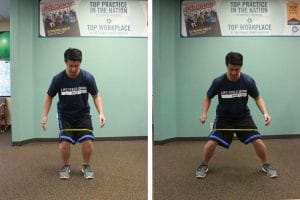
When considering the type of movement being performed, you should decide whether to use a bent knee or a straight leg position for exercises.
- Straight leg exercises– would be used for training sessions that involve movement in a tall position, like top speed running.
- Bent knee position– better suited for training sessions that involve a lot of change of direction. Drills that will require the athlete to keep an athletic stance.
When looking at direction of movement, you should look at whether or not you are working in more of a linear or lateral aspect of movement. If your training session involves both then it never hurts to incorporate both.
Dynamic stretching
The back and forth discussion about static vs dynamic stretching has gone on for ages. Yet the truth of the matter is, the timing of the activity matters more than the stretch matters more than anything.
When I was a track athlete in college, before warming up before any practice or meet, I honestly could count the number of times I implemented static stretching before running on both hands. For the most part, our entire sprints squad performed only but dynamic stretching during every warm-up.
It has been shown that static stretching less than 30 seconds doesn’t diminish, nor add any improvement to performance. Yet, static stretching beyond 60 seconds can actually hinder performance.
Just like hip activation, you want to take into account the direction of movement with your choices.
Movement integration and Neural activation
These two sections can be lumped together because it involves the beginning of the movements that will mimic the movement performed in the training session or competition.
Again, we will pay attention to the direction, and magnitude of the performance about to be performed. Marches and skips can be performed in a linear and lateral directions. As you increase in speed, you can start to implement abbreviated versions of the drills you plan to perform in the upcoming training session. You can even begin to perform full sport movements prior to the beginning of a competition (i.e. blow out starts before a track race)
These exercises progress in speed as you move through them so that the transition to the field of play can be immediate.
Sign up below for an appointment with one of our physical therapists to get started with hands-on treatment and a personalized exercise plan for your back or shoulder pain!
A representative will be in touch shortly.Get injury prevention tips sent straight to your inbox!
Sign up for Life+!
Patrick enjoys exercising and being outside on sunny days, especially when there is a beach involved. He love sports and enjoys watching professional basketball and football. Now a Southern California resident, he looks forward to attending more baseball and hockey games—things he did not do in Iowa. He is also a huge movie buff and has traveled around the country his entire life. He hope to take his travels internationally in the years to come.
Latest posts by Patrick Lewis, PT, DPT (see all)
- 6 Tips to Improve Your Evening Workouts - June 13, 2018
- Fix Your Arm Pain Before It Begins - November 13, 2017
- Psychologically Coming Back from a Major Injury - October 10, 2017
- Not All Warm-Ups Are Created Equal - September 07, 2017
Reader Interactions
Leave a comment Cancel reply
You must be logged in to post a comment.
SIGN UP FOR
LIFE+ is a FREE membership
that offers:
• Informative Newsletters
• Health & Wellness Tips
• Videos from Our Experts
• Special offers
…and much more!
SEARCH
